Glowing Leaves and Fall Visitors

Update on the Loons
Our Loon family is still on the Lake and photographing them amid the reflections of Fall is special – as Prosper demonstrates below.
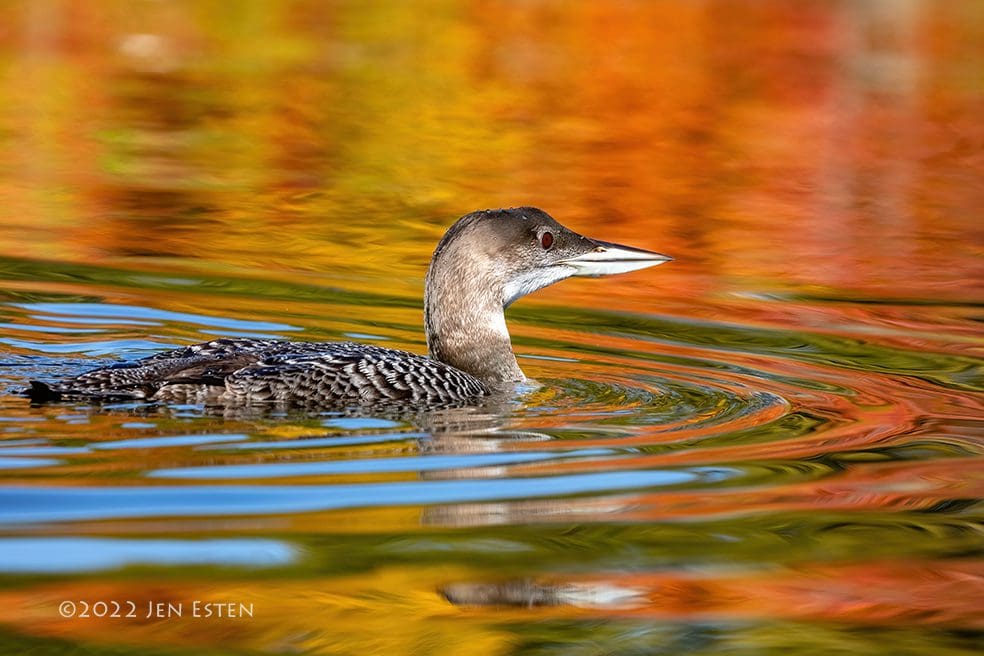
A few days ago, Prosper was alone (below) and working on swallowing a large Brown Bullhead (AKA Horned Pout). That shows the youngster is fully capable of fishing on its own. The female and occasionally the male also continue to provide food for Prosper.
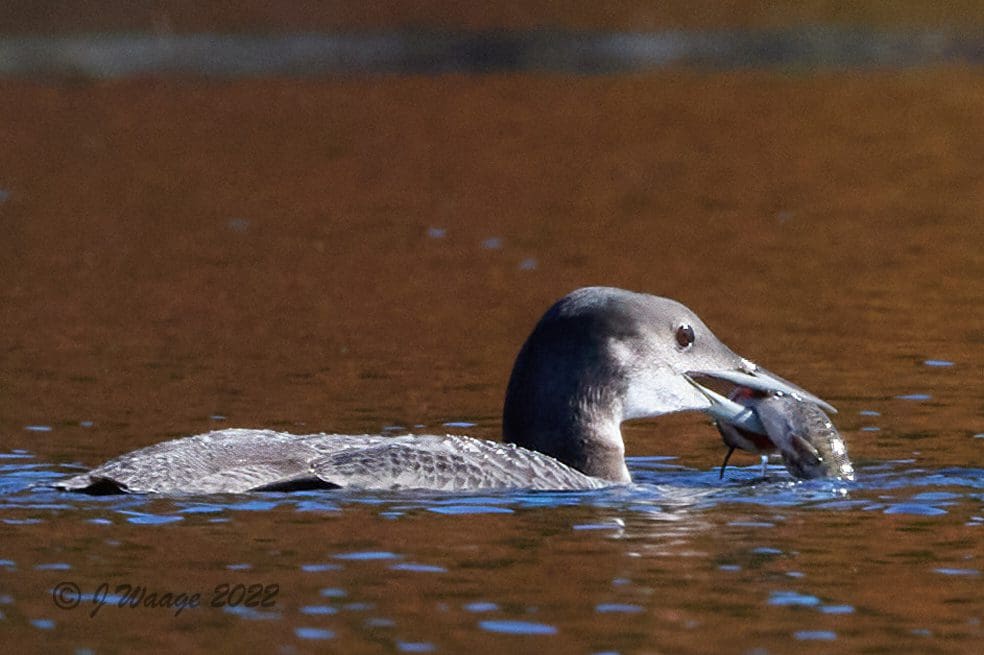
The male has been spending a lot of time at the Elkins end of the Lake and leaving most of the parenting up to the female. He too is making the transition to winter plumage.

What a change this summer has been! It has been a lot quieter having the old couple back together for their 16th year. To date, our female (below) has produced 21 chicks that have fledged! Our pair continue to be one of the top breeders in New Hampshire.

We will recap the Loon’s summer in a final Newsletter for the season in a couple of weeks.
Feathered Visitors
September and October are what I like to call floating feather season on the Lake. It is the time for loons and other waterbirds to begin molting and for seasonal visitors to stop by on their southerly migrations.

Chief among the migrants are Canada Geese whose familiar calls fill the air these days. They tend to spend time in the Cove feeding in the shallows and preening.

Goose music and Fall color seem to go together.
Aldo Leopold, a famous conservation biologist, wrote a chapter called “Goose Music” in his classic book A Sand County Almanac. It was, in part, expressing a concern for his children’s future. Here is a sample – the rest can be found easily on the web:
“I hope to leave them good health, an education, and possibly even a competence. But what are they going to do with these things if there be no more deer in the hills, and no more quail in the coverts? … And when the dawn-wind stirs through the ancient cottonwoods, and the gray light steals down from the hills over the old river sliding softly past its wide brown sandbars—what if there be no more goose music?”
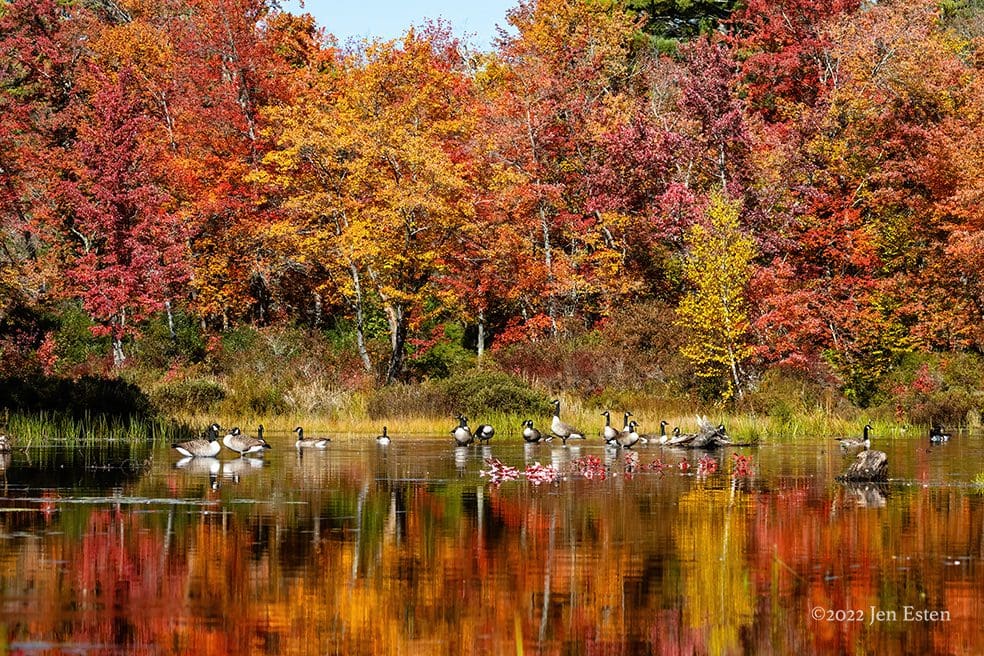
Turtle Cove is alive with color and activity. Wood Ducks have been in there the whole summer and now adults in their full plumage are adding to the color.

Other summer residents like the Great Blue Heron below are fattening up on fish and frogs before heading south.

The chicks of Common Mergansers are as big as their parents.
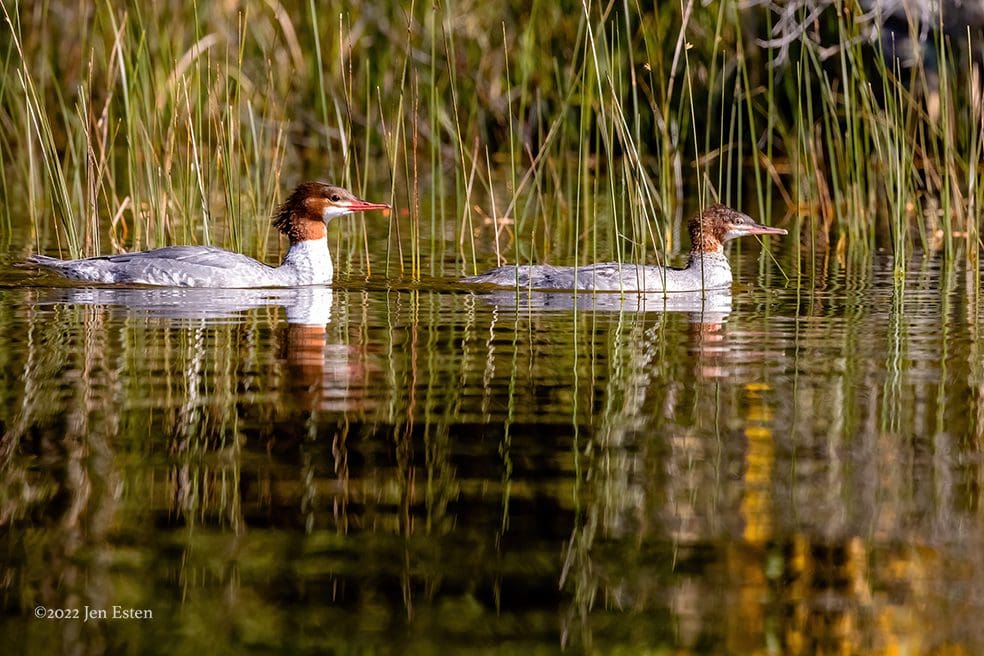
Our backyards and fields are also full of seasonal visitors and residents getting ready for winter and migration. This is the time of year when berries and seeds become essential additions for their diets. These foods provide sugar and fat for energy as well as other nutrients.
Below a Norther Flicker takes a break from foraging for lawn grubs to eye some ripe Winterberry fruits.

Robins, young and old, are busy eating winterberry, juniper and other berries.

Most of our fruit bearing trees and shrubs depend on Robins and other birds for dispersal and even the gemination of their seeds.

Bluebirds, young and old, are also common visitors to shrubs like Winterberry, Viburnum, Serviceberry, Hawthorn and others. These plants are welcome additions to our yards for their colorful flowers and fruits as well as support for feathered friends.

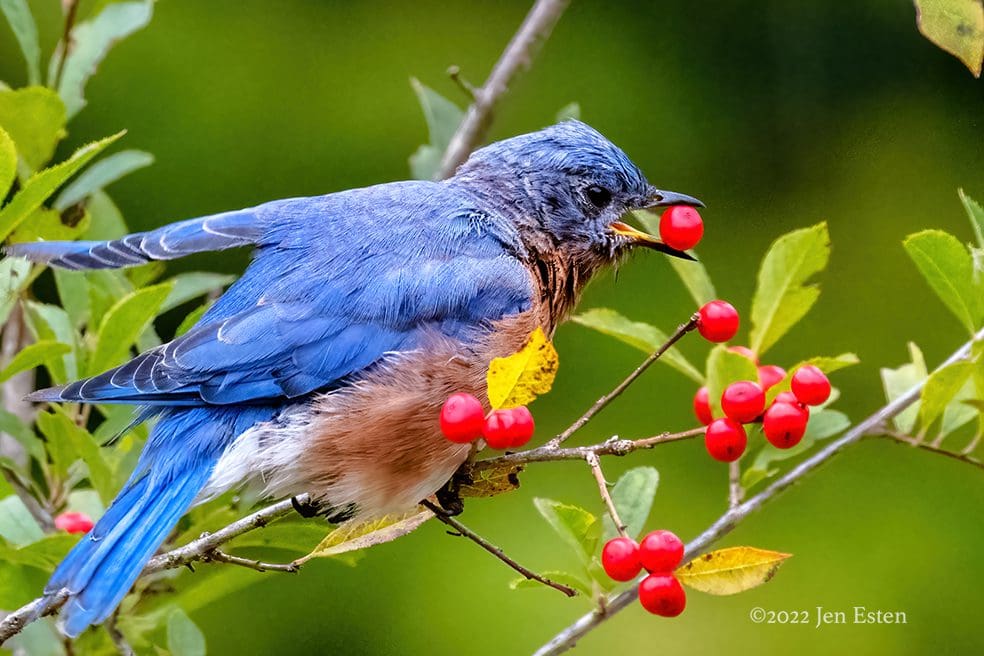
Migrating Warblers, like the Yellow Warbler below, depend on the fat content of many wild fruits for getting to their final destinations. Recent studies have shown that the clearing of fields and yards of native berry shrubs has had a strong negative impact on warbler populations throughout North America.

It is not just fruits but also seeds of many kinds that help support local and migratory birds. Although birds feed their young mostly insects, many adults rely on seeds for their own nutrition and for food during the winter. Below a Song Sparrow is harvesting seeds from a Goldenrod. Local winter birds depend on seeds of perennials in our gardens and fields – a good reason not to cut these types of plants to the ground until next spring.

Many of us have watched flocks of Turkeys wander through our yards all summer as their chicks grow and as they consume insects and ticks. Now they are harvesting acorns and grass and flower seed. Our own feelings about crab grass and other “weeds” have changed a bit as we watch Turkey flocks strip seed from them.
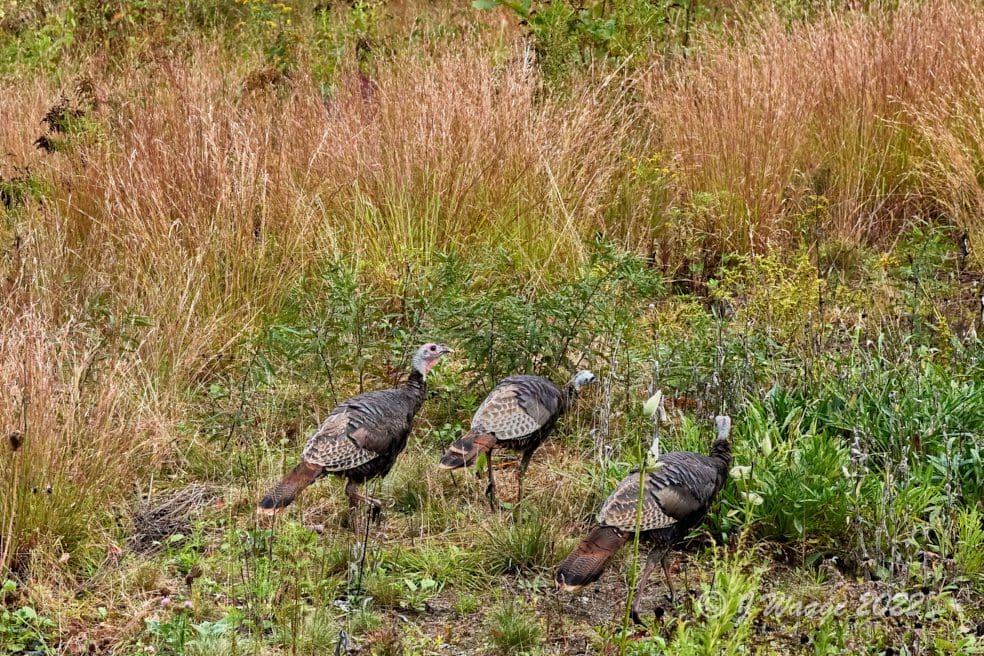
Color Around the Lake
Certainly one of the rewards of living on or around Pleasant Lake and in New Hampshire is Fall Color. Here is a sample taken from an early morning kayak ride.

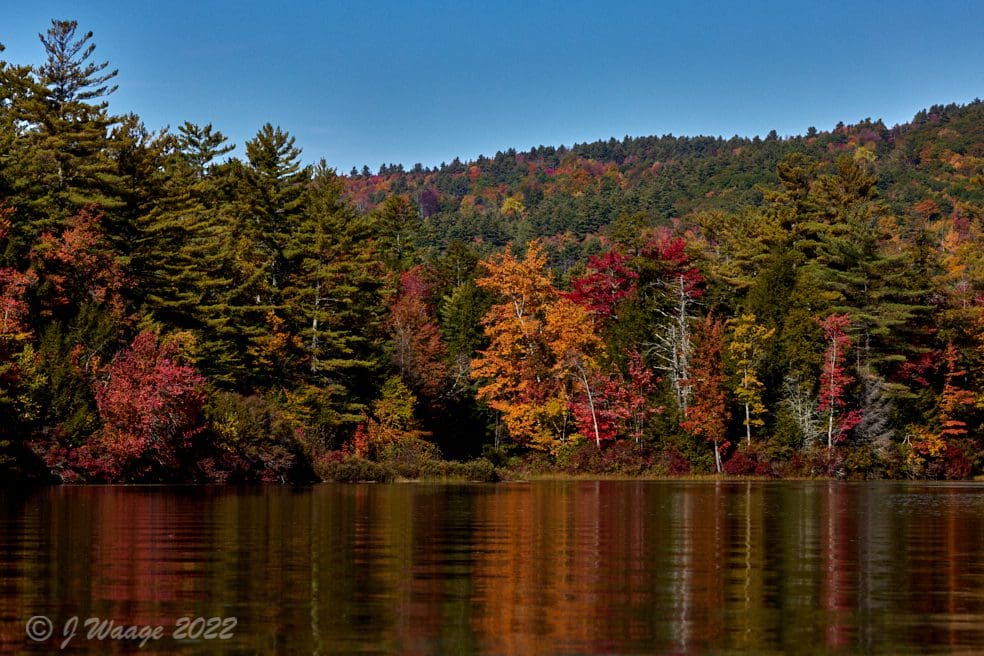
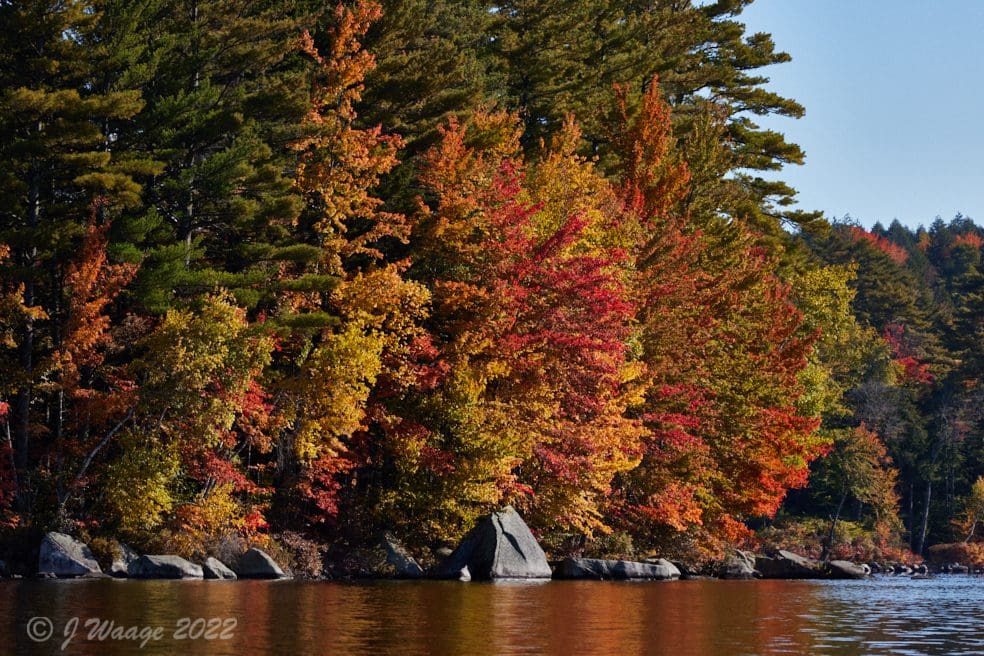

Please Don’t Put Leaves in the Lake

It is the time of year that we are blessed with an excess of leaves on the ground. It is nature’s way of providing a slow release fertilizer to forests. Our Lake already gets plenty of fertilizer added from runoff; disposing of leaves in the Lake just adds to that. Those leaves will break down faster in water and add unneeded nutrients. Their decomposition also takes oxygen away from the Lake waters. Having had a recent Cyanobacteria encounter, it is best if we minimize nutrient additions to the Lake. Composting leaves, mowing them and using them as mulch or just leaving them in your woods will be appreciate by all.
This New Hampshire Lakes article provides further information.
Thank you!!
Bye for now. — We will be back with a “Summer in Review” in a couple weeks.

To be continued… Jon and Jen
Text and Photographs by Jen Esten and Jon Waage
